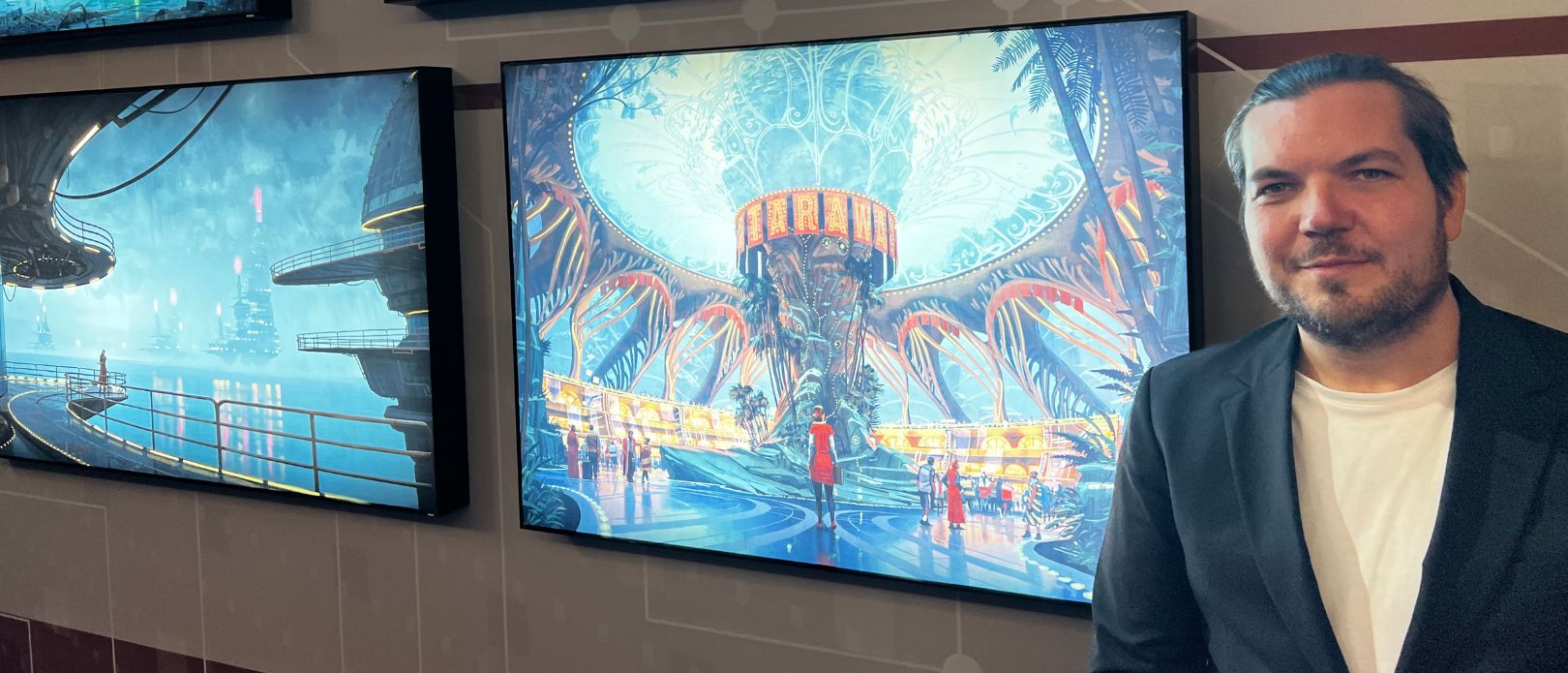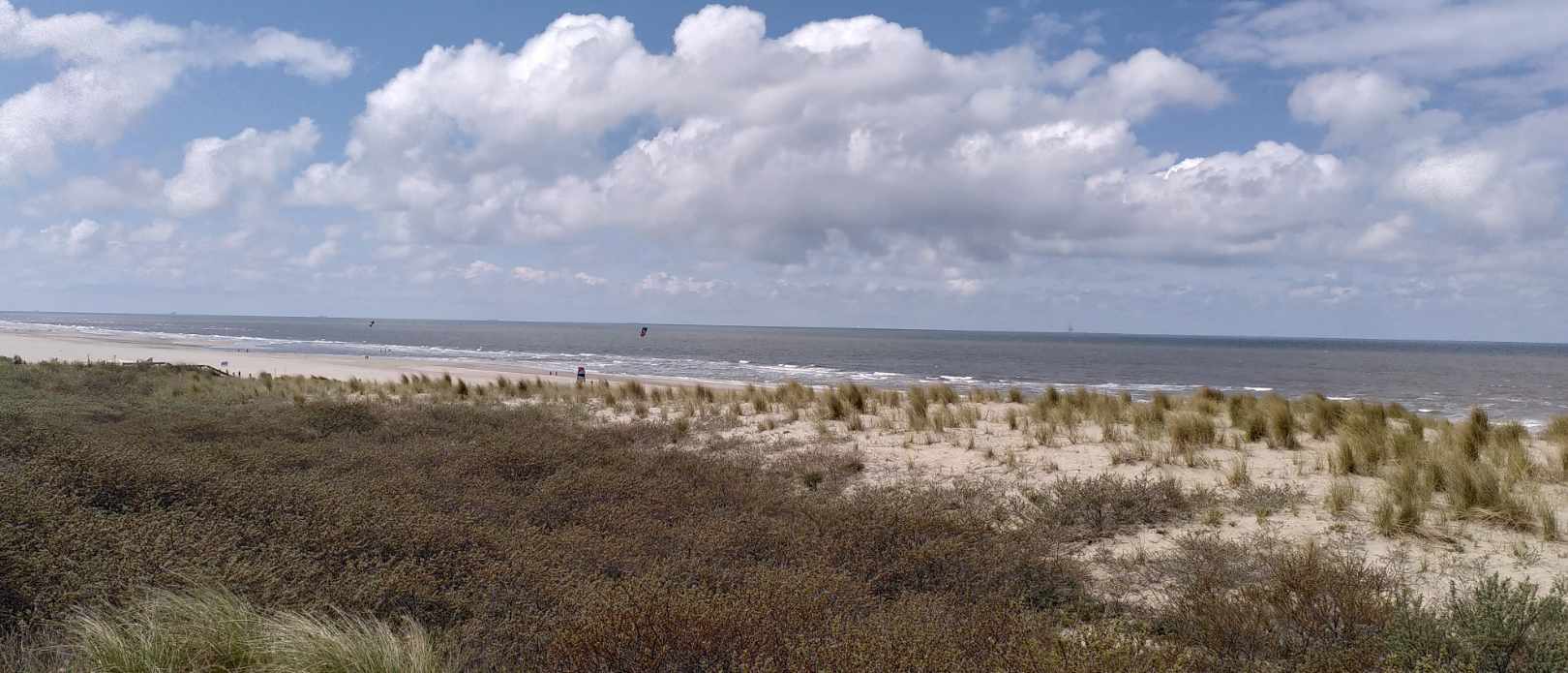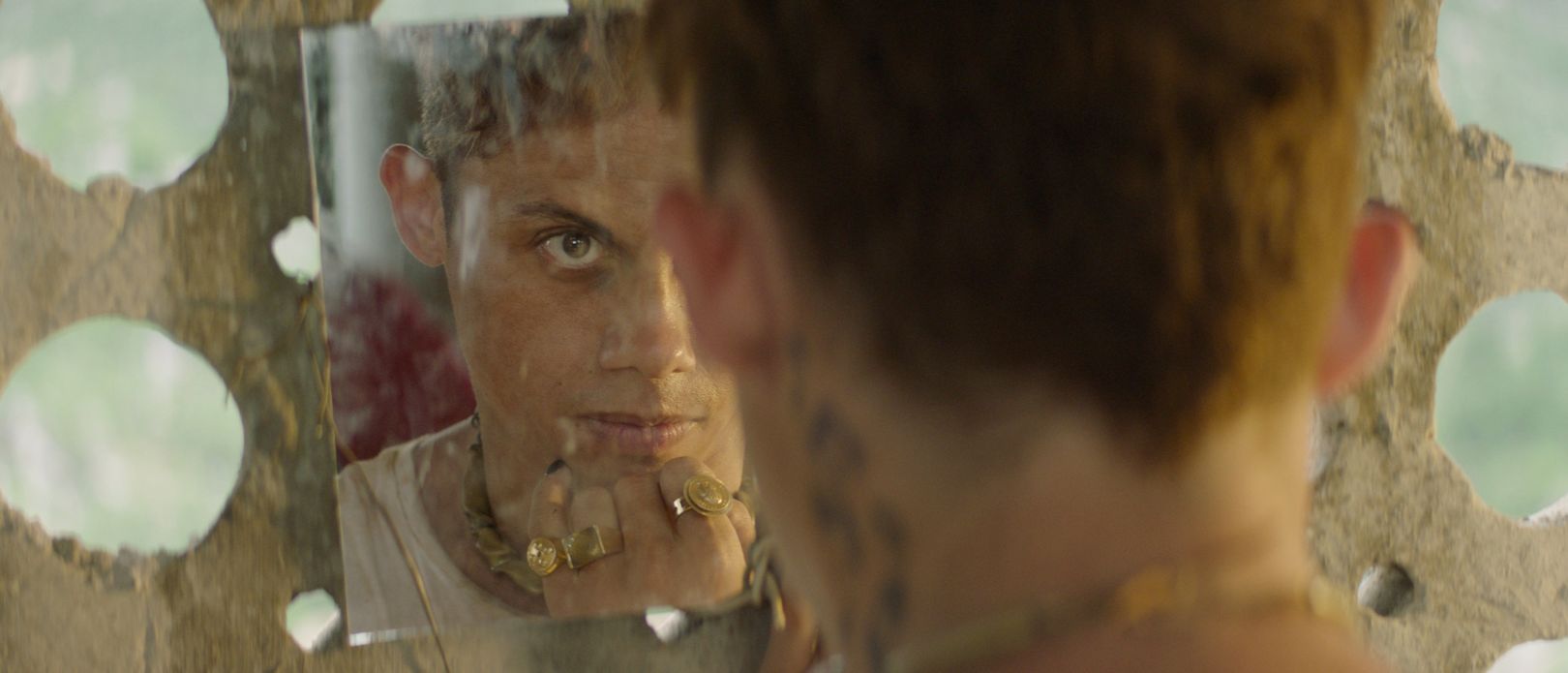Ocean futures
Envisioning alternative futures helps rethink human-ocean relationships
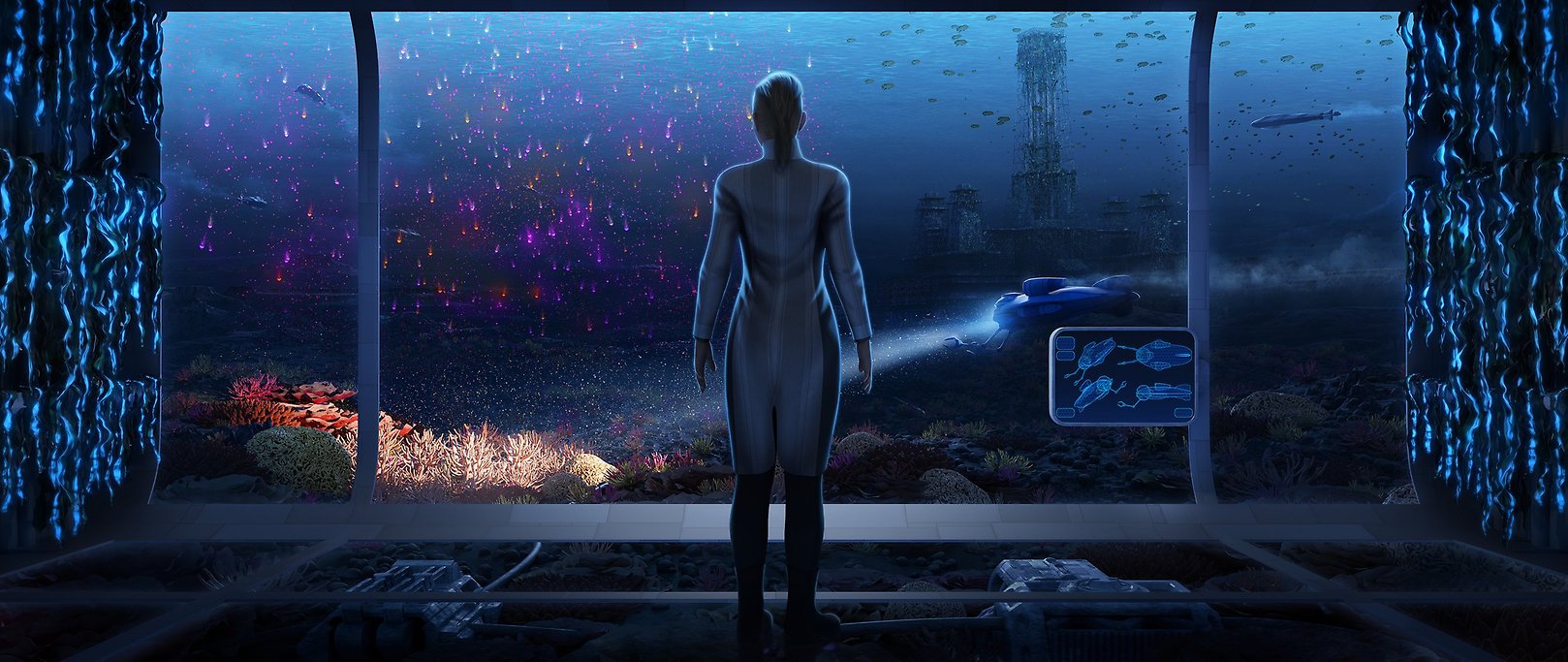
Artwork based on Hannah Lübker's story 'The Ocean Uprising' by Elias Stern: ‘What we give up’.
Imagining sustainable futures for the high seas may inspire change today, according to a recent study.
- Collectively held visions of the future can help to define goals and create a sense of what is possible and desirable.
- A mix of empirical data and creative approaches ensures legitimacy and space for new ideas when creating future visions.
- Story-based visions can be powerful communication tools for engaging diverse audiences and raising environmental awareness.
The high seas are incredibly vast and seemingly distant and disconnected from people. In reality, our lives are closely intertwined with the ocean, most people just are not aware of it. Imagine if we could bridge this mental gap – would that change how we govern and relate to the high seas?
There is a critical need to use one’s imagination and draw on creative and dynamic stories about the future for improved decision-making in the present.
Hannah Lübker, lead author
A recent paper published in the journal Nature Ocean Sustainability encourages us to engage with alternative visions of the future in order to rethink human-ocean relationships and guide decision-making on the high seas.
Collectively held visions of the future can help to define goals and create a sense of what is possible and desirable. That way, they can shape the future, according to the study’s authors, including recent Centre MSc graduate Hannah Lübker and Centre researchers Andrew Merrie, Laura Pereira and Juan Rocha.
“There is a critical need to use one’s imagination and draw on creative and dynamic stories about the future for improved decision-making in the present,” says lead author Hannah Lübker.
A combination of science and creativity
The authors created future visions by combining computational text analysis of scientific literature, scenario building exercises and science fiction storytelling. They put emphasis on combining empirical data and creative approaches when creating their future visions. This ensures that these visions are plausible and legitimate, while opening up spaces where novel ideas and a diversity of alternatives can occur.
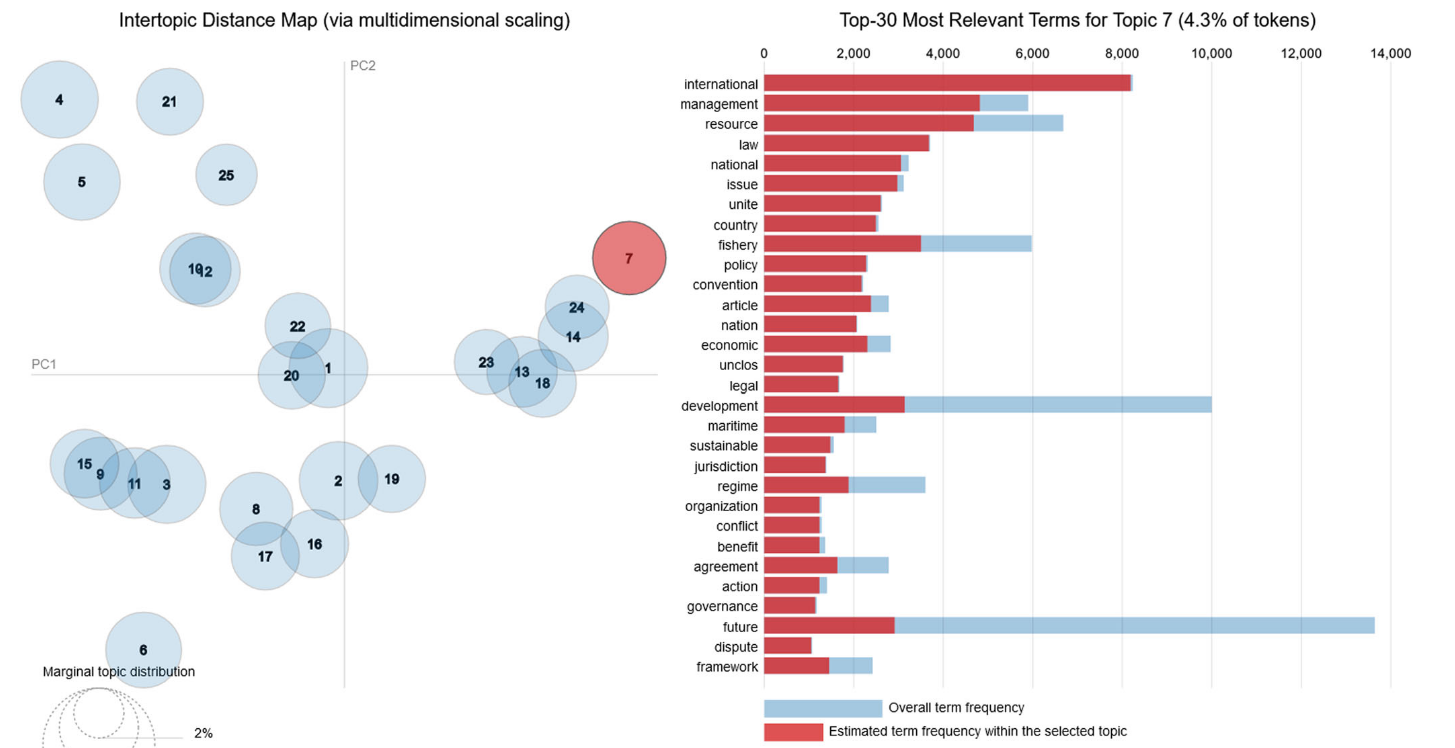 Zoom image
Zoom imageThe topics and keywords that emerged from the computational text analysis of scientific literature.
“We want to expand the notion of what is possible, and creatively envision feasible futures of the high seas, but based on solid scientific evidence,” says Centre researcher Andrew Merrie.
This process resulted in four science fiction stories, which aim to capture the complexity of the system, embrace the uncertainty of the future and question current unsustainable trajectories, while emphasising the many possibilities that the future may hold.
"'Today we are celebrating the slowing of climate change, brought about by our innovative, efficient, sustainable and universally beneficial geo-engineering programs. This year’s festivities are sponsored by Saudi Aramcare, one of our most profitable geo-engineering businesses.' It took some mental energy not to roll her eyes. While the ocean was admittedly in much better shape since every inch of the seabed was bought by geo-engineering companies, she still felt like their revolution was stolen by sneaky, yet genius, capitalists. But what can you do when the enemy integrates your critique into their rebranding?"
Quote from one of the science fiction stories, called Ocean Uprising, by Hannah Lübker.
Powerful communication tools
The story-based visions were then presented to experts on high seas issues, to capture their responses. They described the visions as powerful communication tools that could help engage diverse audiences and raise awareness of environmental issues.
The authors also found that telling stories where the ocean is inhabited by people could evoke the audience’s emotions and empathy, and foster a more personal connection to it, which is necessary when imagining collective futures.
“Imagining yourself as a character in a story about the high seas allows you to understand them as a place closely related to you, rather than as a place ‘out there’ for which you do not have to be concerned,” says Hannah Lübker.
Methodology
A computational text analysis, specifically topic modeling, was used to study which topics are most prevalent in scientific literature regarding the future of the high seas. These topics, which could also represent concepts, events, or framings were used as input for a structured futuring approach. This was a systematic yet creative approach to develop a detailed world in which the story took place, to which characters and a plot were added as the future visions evolved. The resulting stories were analysed using expert interviews, to reveal which elements of these futures can be related back to current realities. The stories were accompanied by four visual artworks, which were created by an artist in collaboration with the lead author.
Lübker, H.M., Keys, P.W., Merrie, A., Pereira, L.M., Rocha, J.C., Otruño Crespo, G. 2023. Imagining sustainable futures for the high seas by combining the power of computation and narrative. npj Ocean Sustainability.
